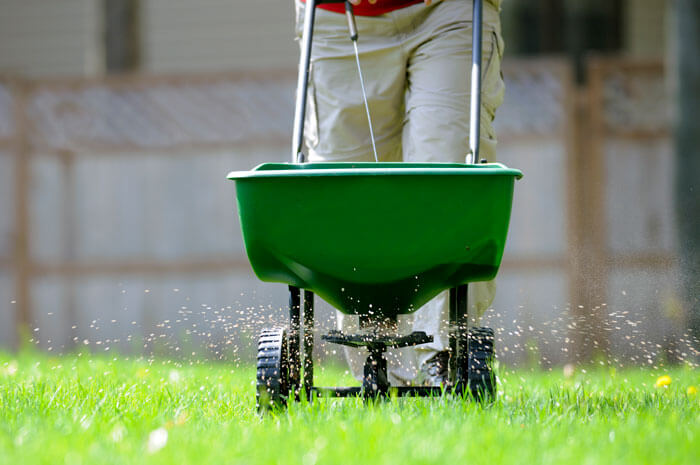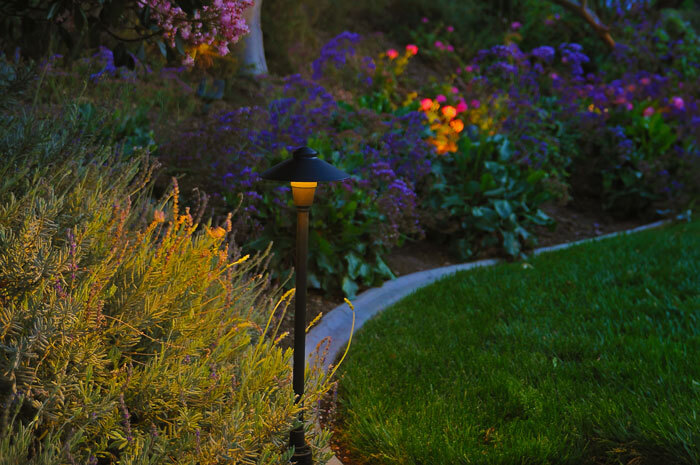
Winter has come and gone and the sun is finally shining. That can only mean one thing. It’s time to show a little love to your lawn with spring fertilizing. But how do you know exactly when to fertilize in the spring? Our experts here at Toro YardCare have boiled spring fertilizing down to a science — and a simple step-by-step guide.
Start with the Soil
A healthy, green lawn always starts with what’s going on beneath the surface. Start your spring fertilizing by using a soil thermometer to check the ground temperature. When the temperature of the soil hits 55º F under the surface, it’s officially time to fertilize. Start this process in early spring, around mid-to-late April. Another way is to simply look at nature! It’s time to fertilize when the grass starts growing or the lilacs start blooming. When you see this, it’s time for spring fertilization.
After your first round of fertilizer, feed your lawn again about four weeks out — right around mid-May.
You’ll want to keep fertilizing your lawn every six or eight weeks throughout the active growing season — which lasts through October.
Now that you know when to fertilize in spring, how do you start the fertilization process?
Learn the ABCs of NPK
Every healthy spring yard needs 16 essential elements for healthy growth. Most of these elements come from its environment, but three elements, Nitrogen (N), Phosphorus (P), and Potassium (K), are needed in larger quantities than is usually produced naturally. This is why spring fertilizing is so important. So, what do these elements do?
- Nitrogen: That deep green color you love in the springtime? That’s the work of Nitrogen. Beyond the beauty it brings, it also adds proteins and enzymes to add the steady growth and shoot density needed to beat weeds, diseases and insects.
- Phosphorus: Phosphorus stays in the soil to aid root growth and improves establishment rates which aid in not only spring fertilizing but overall lawn health.
- Potassium: Potassium often leaches into the soil and enhances grass resistance to cold, disease, drought, and heavy foot traffic from people and pets.
Test it Out and Bag it Up
Levels of these three naturally occurring elements often vary pending on where you live. To make sure you’re fertilizing your lawn correctly based on its unique needs, do a soil test. It will tell you the appropriate fertilizer mix for your lawn.
Spring fertilizing is a numbers game. Literally. Each bag of fertilizer is stamped with a set of numbers on it that are important to know when it comes to spring fertilization. These numbers refer to the amount of N, P, and K that’s in it. For example, if you see 20-10-10, that means it has 20% N, 10% P, and 10% K. Look at your soil test results to see which bag is best for your grass type. You probably can’t go wrong with a basic 20-5-10 lawn fertilizer mix in spring.
Starting from grass seed? If your state allows it, choose a fertilizer that contains phosphorus to help the root system develop. An 18-24-12 lawn fertilizer is a good place to start.
Hose It Down
If you feed your grass, it needs a drink to wash all those nutrients down. But remember, the more you water your lawn, the more fertilizer it will need. Because as the grass grows, it uses more nutrients, fertilizer can help replace those nutrients. Yards that have automatic sprinklers can go about six weeks between feedings, but if you water by hand, you can wait two more weeks. For spring fertilization, check your fertilizer bag to see if you should water your yard before or after applying fertilizer.
Go Slow
A slow-release fertilizer often has advantages over fast-release fertilizer. For starters, slow-release fertilizers release nutrients over time, meaning you can wait a little longer between fertilizer applications. Most find that yards using slow-release spring fertilizing methods can typically wait around six to eight weeks. Opt for a slow-release fertilizer that has nitrogen to keep your lawn looking green. Aim for two to three pounds of nitrogen throughout the whole growing season.
Now That You Know More About Spring Fertilizing, Make it Happen
Fill up a lawn spreader with spring fertilizer granules and get to it! For best results, apply the fertilizer around the perimeter and then work your way in. Criss-cross your yard to assure adequate coverage and prevent over-coverage. Remember, less is more when it comes to fertilizing your yard for spring. You don’t want to waste money, or worse, burn your yard by over-fertilizing. You’ve seen those yards — and now you can be better than that. Sweep up excess fertilizer granules to keep Mother Nature happy. With a little practice, you can get your lawn fertilized and looking green and healthy in no time. Plus when you’re ready to cut it, Toro has plenty of lawn care tools for that, too.



